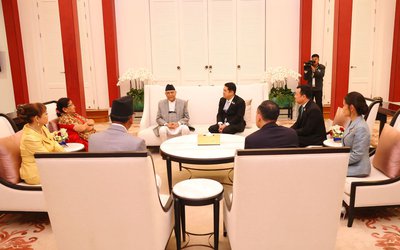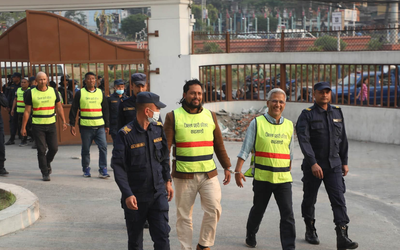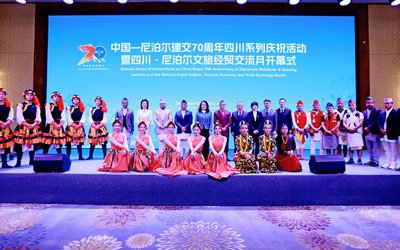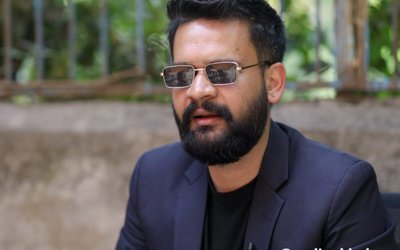More on News





The life of Balkumari Sinjali, a resident of Nawalparsi district, has drastically changed following the installation of electricity generated by a windmill in her residence.
“The power supplied by the windmill has transformed our village in Kawasati,” said Sinjali.
Jus Bahadur Ale also has a similar experience. Untouched by the central grid, the electricity supplied from windmill in the nearby village in Nawalparasi has made a lot of difference. From education to health and livelihood, the electricity has made everything different in the village.
A recent study by Practical Action indicates that about 61 per cent households in Nepal do not have access to minimum energy required for lighting. Addressing Nepal’s energy problems requires an increase in access to modern form of energy. Practical Action’s experiences have shown that energy is one of the key areas for transformation of livelihood.
Similarly, the life of Devi, a mother of three children, has also changed. She saved time and money after the installation of a wind turbine to produce clean energy. “I used to spend a lot of money monthly to buy kerosene and candle. Now I don’t need to worry about it,” she said.
Recently, Practical Action installed a 400 watt vertical axis wind turbine (VAWT) in her village of six households. All six households now have access to clean energy. “My life is so much better now that we have clean energy for lighting in our homes. We could barely afford the trip to buy kerosene,” Devi said.
The newly installed wind turbine supplies energy equivalent to 2 light bulbs for each 6 households in Devi’s village. She is happy with the change and says, “We can also charge our mobile phones and watch TV.”
These are some glimpses shown during the launching of Poor People’s Energy Outlook 2012: Energy For Earning and Living (PPEO 2012) in capital recently. With the support from United Nations Development Program (UNDP), and GiZ, the report was published by Practical Action.
Launched by Minister of Environment, Science and Technology Keshav Man Shakya, PPPEO 2012 highlights the overall scenario of energy consumption and ways to provide cheaper renewable energy to the poor people living around the world.
“PPEO 2012 can be advantageous to anyone seeking to better understand the various factors of energy access and its role in social and economic development. It is more significant in the context of Nepal where access to energy for poor people is a great challenge. The report can provide remarkable insight to the International Energy sector and also can be valuable to National program planner in Nepal and at the local level,” said Achyut Luitel, country director, Practical Action Nepal Office. “The report gives a spotlight on energy access and its impact on the ability of the world’s poorest people to earn a decent living.”
Launching the report Minister for Environment and Science and Technology Keshav Man Shakya stressed the need to increase the access to the renewable energy to the rural poor. “Energy poverty remains a main issue in Nepal. There is the need to increase the access to energy in rural Nepal to eradicate poverty.”
Reviewing the report and its appropriateness in the context of Nepal, Executive Director of Alternative Energy Promotion Center Govind Pokharel said the report is the first of its kind which helps to see the state of energy availability and use of renewable energy.
Practical Action has included energy as one of the important sectors to work during the strategic period of 2012-2017. Practical Action believes that energy is a vital sector to escape poverty, as energy can help people earn a living and find their way out of poverty. But poverty itself remains the main barrier to access for the people who currently lack energy services and supplies. In the present situation, one third of the world’s population does not have access to modern energy services and the situation in Nepal is more worrisome.
Practical Action brings forward Poor People’s Energy Outlook 2012 as a catalyst for the movement for change on energy access and source of information to support it. This movement for change has its focus on the United Nation’s Goal for universal energy access by 2030.
Poor People’s Energy Outlook examines the linkages between energy access and better opportunities for earning a living, while recognizing that there are many barriers which must be overcome on the path from improved energy access to increased incomes. The second report in the PPEO series revisits the definition of energy access reintroducing the concept of Total Energy Access as a progressive framework to measure how people use energy in a healthy and productive way.






